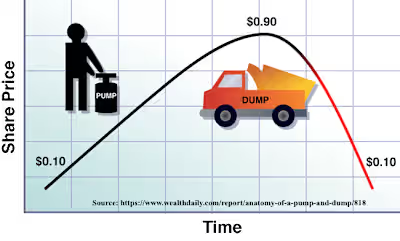White Paper-Industry Trade Article-Draft – Ground Transportation
1
Every new and existing business owner knows that to achieve success in this hard-‐hit economy requires vision, foresight and knowledge. But more important it takes a sound business mind and a savvy mentality to make a profit in this economic recession. For those entrepreneurs that are considering starting up their own ground chauffeured transportation company or those who are already established but trying desperately to stay afloat during these difficult times, it may come as a shock that it is still possible to make a profit and get ahead of the curve. In order to do this, it is imperative to have a sound marketing strategy and a willingness to be flexible when it is needed during the long term planning process.
After all, it takes more than a vehicle and a tank of gas when running a ground chauffeured transportation business. The company must develop a dynamic marketing plan that consists of collecting first-‐rate market intelligence and be able to visualize business-‐assessment details in order to fully understand their current capabilities and how to reach ideal goals by the beginning of each fiscal year. In order to achieve this goal, new and existing business owners in this industry need to pay close attention to how their marketing plan is crafted. For it will greatly impact their business operations and profit margins in the long run as it will dictate their pricing policies and ability to control both budgeted and additional costs.
As owner of XYZ, Inc. I’ve learned that the marketing plan can have a great impact in detailing the strategic components that detail the upcoming year’s marketing initiatives. When planning my marketing plan for an upcoming year I always make my fiscal year start in January and end in December. This means that I must start planning my marketing strategies three to four months in advance and make occasional tweaking if the market conditions change drastically throughout the year. The other reason why a new or existing business owner in this industry should prepare their marketing plan well in advance is because it gives them time to brainstorm ideas for existing and future strategies, setting priority targets and goals while staying on track with your current business capacity. It also enables the owner to weigh their performance indicators that measures success and failure.
To fully understand the benefits of planning a successful marketing strategy that is based on desired and realistic results, we cannot limit ourselves to just vision, foresight and knowledge. In order to achieve this it is particularly important for new and existing owners and managers of a ground chauffeured transportation company to fully grasp the basics of crafting their marketing plans and understanding which areas to allocate funding for within their advertising budgets. Thus a general discourse on these topics is required to help the owner’s and managers consider these issues when developing their marketing strategies.
2
The Basics of Crafting a Marketing Plan:
As mentioned in the above quote, “A marketing plan is a strategic outline for the coming year’s marketing activities.” It is usually comprised of five sections that consists of the following ingredients:
1. Executive Summary; 2. Situation Analysis; 3. Marketing Strategy; 4. Financials, Budgets and forecasts; 5. Controls.
I. Executive Summary:
The executive summary is the most important part of a marketing plan. It provides the reader (owner or manager of the company) an overview of all the work that has been done to develop the marketing plan and how to make one’s vision become a reality. According to marketing communications consultant and journalist, Lee Ann Obringer, “Although it comes first in the marketing plan, the executive summary is usually written last, after you have analyzed, wordsmithed, and ironed out the details of your plan. So, once you have the meat of your plan written, come back to this section and write your executive summary which should briefly cover the: 1.) Market Overview; 2.) Competitive Overview; 3.) Product Overview; 4.) SWOT Analysis (strengths, weaknesses, opportunities and threats); 5.) Goals and Objectives; 6.) Strategies; 7.) Action Plan and Implementation Schedule; and 8.) Evaluation Method.” (How Marketing Plans Work, www.howstuffworks.com)
In addition, the executive summary is also used in creating business plans so it should generally be written in a way that entices potential investors and business partners. In other words, the executive summary is not only used for providing guidance to the in-‐house staff but also for foreign eyes as well who could ultimately become important business relationships/partners.
II. Situation Analysis:
The situation analysis is also an important element as it is the foundation of the strategic planning process for the marketing plan. It summarizes the market needs, trends, growth and demographics. Also, the SWOT Analysis is another important component as it analyzes the strengths, weaknesses, opportunities and threats that are associated with a particular ground chauffeured transportation company. In addition the situation analyses also details the company’s services, keys to success, competition and critical issues that may affect the business operations. When analyzing each of these indicators, it is then time to begin strategizing a marketing plan.
III. Marketing Strategy:
3
The marketing strategy sets the goals for the marketing plan to work. It defines the business and provides a description of the company’s transportation services. It also describes the profile of the target market including its role in relationship to the competition. According to the CCH Business Owners Guidebook online, “Your marketing strategy should be measurable and actionable and work to differentiate your company and products apart from the competition. If they are not measurable and actionable and do not differentiate your company from the competition, revise them until they are. A good marketing strategy should not be changed every year. It should not be revised until company objectives (financial, marketing and overall company goals) have been achieved or the competitive situation has changed significantly”.
IV. Financials, Budgets and Forecasts:
This section of the marketing plan determines the viability of a marketing strategy. In fact it is solely responsible for determining whether the business will attract any potential investors and let’s not forget to mention being able to fund the whole marketing strategy as well. The following parts should be included in this section and they are: 1.) Break-‐even analysis; 2.) Sales forecast; 3.) Expense forecast.
IV.a. Determining the Marketing Budget:
When determining the marketing budget for a ground chauffeured transportation company, it’s important to realize that marketing is not just an expense as it is also an investment to the business as well. After all, the budget will pay for a variety of promotional materials that the business owner will have in their arsenal to help fuel their marketing success. The budget can be centered around a variety of materials ranging from business cards and brochures, business website and phone service, print and digital media, trade show events, networking events, yellow pages, Entertainment Book and monthly coupons, professional business affiliations, national and local affiliations, tv and radio advertisements, social and business networking sites such as Facebook , Twitter, LinkedIn and Plaxo. And lets not forget the value of word-‐of-‐mouth and a good solid reputation for being a reliable provider.
When deciding the percentage of funds to be allocated to a marketing budget, Celia Rocks, a web partner at INSIGHTS for Marketing (insightsformarketing.com), and author of the book Brilliance Marketing Management: Let Your Strengths Outshine the Competition said:
“The simple formula that most companies should follow when budgeting their marketing dollars is: 1.) If you market consistently, allot 10 percent of your gross revenue for marketing; 2.) If you haven’t marketed at all lately, allot 12 percent; If you’re very successful and don’t need any more business, take it down to, say 8 percent—and spend most of that on marketing to current customers. People tend to make the issue of marketing a lot more complicated than it has to be, “says Rocks. But I’ve
4
worked with plenty of companies over the years, and I’ve found through trial and error that 10 percent of gross revenue is about right. Budget less and you’re not getting your name out to new customers; budget too much more and you may not get a profitable return. Ten percent seems to be the magic number.”
This approach has become quite common in the ground chauffeured transportation industry as Jim Powers, owner of Allstar Limousine Service states that the first 4-‐6 months usually have higher advertising budgets and the next 3-‐ 5 months being lower than the beginning. And then as the remaining 3-‐5 months of the year come into effect, he usually increases the budget again as travel estimates indicate that this is the most popular time in the year that people are traveling due to the holidays.
V. Controls:
In this final section, we focus on the fact that any marketing plan requires control mechanisms that enable it to either stay on track or realize that they’ve reached their objectives. After all, there is no planning without control. In this case it is a process of monitoring the proposed strategies as they are implemented and make changes when necessary. Measurement, evaluation and monitoring are three important components for controlling the marketing plan. But most important, it requires a set of standards that the business owner will use when weighing performance.
As we’ve seen in this article there are many components that make up the inner workings of a successful marketing plan. In order to get more detailed information about creating it for your business, check out the libraries, bookstores and online resources such as www.entrepreneur.com and www.xyzinc.com.
Like this project
Posted Aug 22, 2024
White paper and thought leadership for client in the ground chauffeured transportation industry covering talking points on staying afloat as a small business.
Likes
0
Views
9





